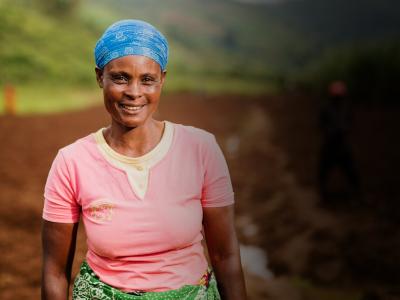According to the United Nations, 137 women and girls are murdered on average a day by their partner or someone very close to them. Ending violence against women means that the international community must prioritize ending femicides across the world.
What are femicides?
Femicides are a form of gender-based violence where women and girls are killed by a family member or an intimate partner due to their gender. Types of femicides include honor killings, killing of women accused of witchcraft, female genital mutilations, and infanticides.
Globally femicide is the leading cause of the premature deaths of women, but research on femicides is limited. The United Nations Office on Drugs and Crime (UNODC) reported that nearly twenty thousand women and girls in Africa are killed per year — this is over four times the rate of femicides in Europe. There is an upsurge trend of femicides in countries that are currently facing conflict or have faced conflict.
Why do femicides occur?
Violence against women often has deadly consequences. Global statistics show that one in three women faces physical or sexual violence at some point in their life — this is exacerbated in countries that are facing or have faced conflict.
Femicides can be caused by a combination of many factors such as:
1. Sexism: Women are often blamed for their own sexual assault, harassment or rape, and in some cases are killed for it.
2. Misogyny: Perpetrators of violence against women often do so because they believe women are lesser in society.
3. Power Imbalances: 60 percent of the world's hungry and poor people are women and girls, but women face serious risks of danger in the job market such as harm from male co-workers are supervisors.
4. Educational Inequalities: Women make up more than two thirds of the world’s 796 million illiterate people. The more educated a woman is, the less likely it is for her to face violence.
What are the specific forms of violence that can lead to femicides?
1. Intimate partner femicide:
82 percent of the victims of intimate partner killings are women. Trying to escape an abusive relationship or seeking divorce places a woman at a higher risk of being killed. Perpetrators often commit crimes from a place where they have a deep sense of ownership of the victim based on unequal and rigid gender stereotypes.
2. Femicide in the name of honor
Usually committed by family members (including women), the victim is considered having caused dishonor to the family. She is suspected of having a pre-marital affair, refused to marry her chosen husband, might be suspected of committing adultery, or she may be the victim of a prior sexual assault. High numbers of honor killings are said to be documented in Afghanistan, India, Palestine, Tunisia.
3. Dowry deaths
A 2019 India study shows that more than 7000 crimes against women are dowry deaths, and more than 5000 abetments to suicide. These women face domestic violence such as arson.
4. Femicide-suicide
Intentional murder of a woman followed by the perpetrator’s suicide is an incident reported in across the world. Research shows that almost half of these crimes are committed in the victim’s house, after she has divorced from the perpetrator.
5. Femicide in war and conflict settings
The Academic Council on the United Nations System reports femicides are highly prevalent in Afghanistan, Bosnia and Herzegovina, Sudan, the Democratic Republic of Congo, Iraq and Rwanda. Local communities are destroyed when opponents in war systematically target, mass rape and kill women.
Other forms of violence that lead to femicides are female sex selection, witch hunting, human trafficking, cyber bullying of women, and street harassment of women.
What are the ways to end femicides?
Femicides can be prevented by methods such as:
Encouraging Political Action: Femicide reduction requires a complete cultural shift towards more equal gender roles, including governmental action that prioritizes the safety and protection of women and girls from femicides.
Promoting research based in the Global South: Europe has led the research and action to counter femicide, and yet data from Africa and Asia on femicides is much higher. Investment into femicide research in developing nations could develop global and local understanding of femicides in the countries affected the most
Supporting the Establishment of Local Observatories in the Global South: Local observatories raise awareness for femicides in local communities, which leads to more lobbying, research, social media campaigns, and victim risk assessments.
Involving Men in Femicide Prevention: Because 90 percent of perpetrators are men, men must be part of the solution. Male allies help educate other men in their community.
Some of these strategies are employed by WfWI through the Stronger Women Stronger Nations program. WfWI is working with the most marginalized women, staying for the long term, and creating access and opportunities that transform women, their families, and their communities. The program is complemented by a men's engagement program, a graduate support program, and a community advocacy program.
About the Author
Audrey Mugeni M. is based in Nairobi, Kenya. She supports the Global Support Center Grant Management & Program Planning Team at Women for Women International. She is a master's student at Kenyatta University studying Gender and Development Studies, and is currently writing her thesis on femicides in Kenya.
She have spent the past few years of her career working with women and adolescent girls in Kenya and the African region. In addition to work and her education, she co-started Femicide Count Kenya in 2019, an organization that tracks the number of women who have been killed by an intimate partner or someone they know.

